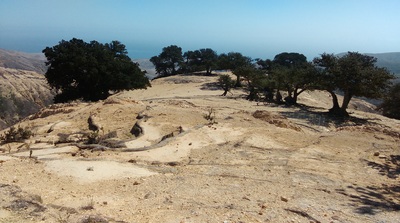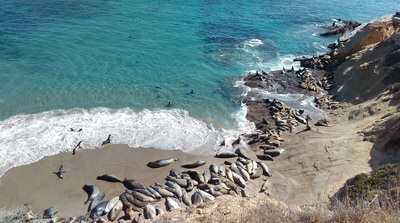|
For the 19th time, Walt Koenig has put together his acorn report. Check it out below!
2 Comments
In order to expand our understanding of seed production in oaks on the California Channel Islands, we recently began annual acorn surveys on Santa Rosa Island (SRI), the second largest island off the California coast. The island, which has recently been opened for public access, is home to the CSU Channel Islands Field Station managed by Dr. Cause Hanna. Similar to Santa Cruz Island (SCI), SRI harbors island oaks (Quercus tomentella), island scrub oaks (Quercus pacifica) and coast live oaks (Quercus agrifolia). Scott Sillett, a research ecologist at the Smithsonian Conservation Biology Institute's Migratory Bird Center, and I became interested in the spatial and temporal variation of seed production on the Channel Islands because of the crucial role that oaks play in the recovery of the islands from human impact. Acorns also provide subsistence to a number of bird species, including acorn woodpeckers (Melanerpes formicivorus) and island scrub-jays (Aphelocoma insularis) which are endemic to SCI.
Quantifying the patterns of acorn production in oaks will thus allow us to test hypotheses about the drivers underlying the variation, as well as tie the availability of seeds to demographic parameters of acorn-dependent species. To get an estimate of the yearly acorn production, we mark individual trees and conduct timed acorn counts, providing a measure of relative acorn crop. A single year of data will tell us how much variation there may be among trees, but the true value lies in the repeated visits of these trees over the years. With a sufficient number of years in the data set, we can determine whether oaks on the Channel Islands behave similar to mainland trees, and whether they show synchronized seed production patterns, also called mast-seeding behavior. We can also investigate what role of abiotic parameters (temperatures, precipitation, wind etc) have in shaping annual seed production. Since oaks play a central role in the terrestrial ecosystem of the islands, insights derived from these studies will be of value to scientists and conservation practitioners alike. To reach Santa Rosa, we boarded a three-hour boat ride in Ventura, CA, that took us along the south side of Santa Cruz Island and dropped us at the new pier in Becher's bay on the northeastern shore. The half-mile trek to the field station quickly reminded us that we were far away from the busy Southern California infrastructure, but also that we packed too much gear. Once settled in, we were introduced to Jay Woolsey, a highly motivated CSUCI undergraduate who started working on island oak populations on SRI. Over the next two days, we estimated the acorn crop of more than 70 trees and found a surprisingly large number of acorns. Many of the oaks, however, still had piles of last year's acorns below them, dried out and dead, reminding us that many functions of the ecosystem have not returned to a natural state. During a break from our counts, Dr. Hanna also provided us the opportunity to inspect habitat restoration efforts, as well as a large beach full of California sea lions (Zalophus californianus) and elephant seals (Mirounga angustirostris). SRI is an important hauling and breeding site for a large number of pinnipeds, as well as seabirds. Finally, as it was time to leave the island after many hours of hiking and data collection, the skies opened up and rain started to pour. In light of the four-year drought, our hearts rejoiced, but after a good hour of loading gear and waiting at the pier, we were all glad to find a dry spot on the boat back to Ventura. |
Archives
October 2018
|
Mario Pesendorfer, Ph.D.
Copyright © 2017
























 RSS Feed
RSS Feed